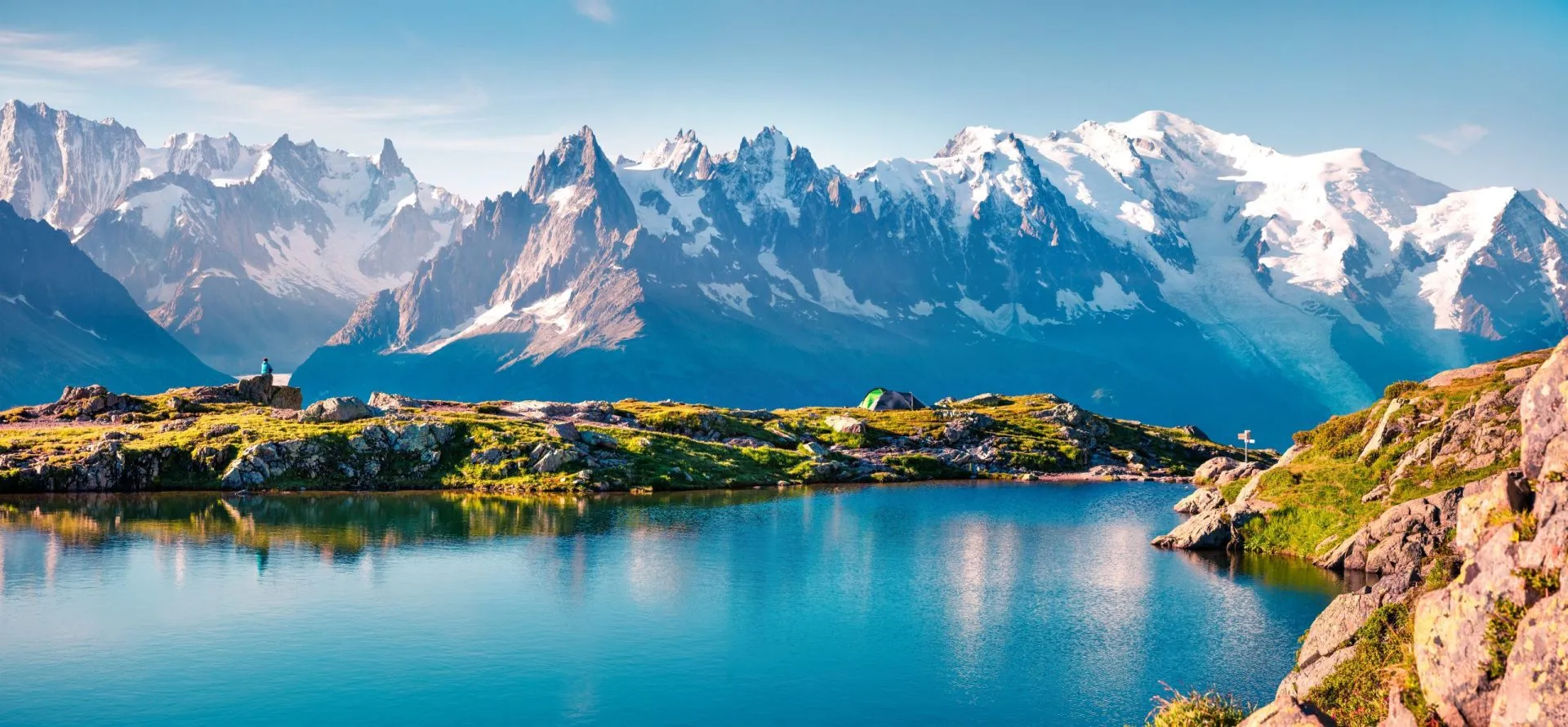Tour du Mont Blanc (TMB) er en av de mest berømte langdistanseturene i verden, rundt den høyeste toppen i Vest-Europa på rundt 170 kilometer. Landskapet er noe av det mest imponerende i Europa, med en fantastisk og mangfoldig kombinasjon av isbreer, alpine enger, snødekte topper, innsjøer, elver og fossefall, noe som gjør det svært populært blant turister og turgåere.
Hvis du er interessert i å gå denne utrolige ruten selv, kan du fortsette å lese og lære alt du trenger å vite om å gå og fullføre TMB.
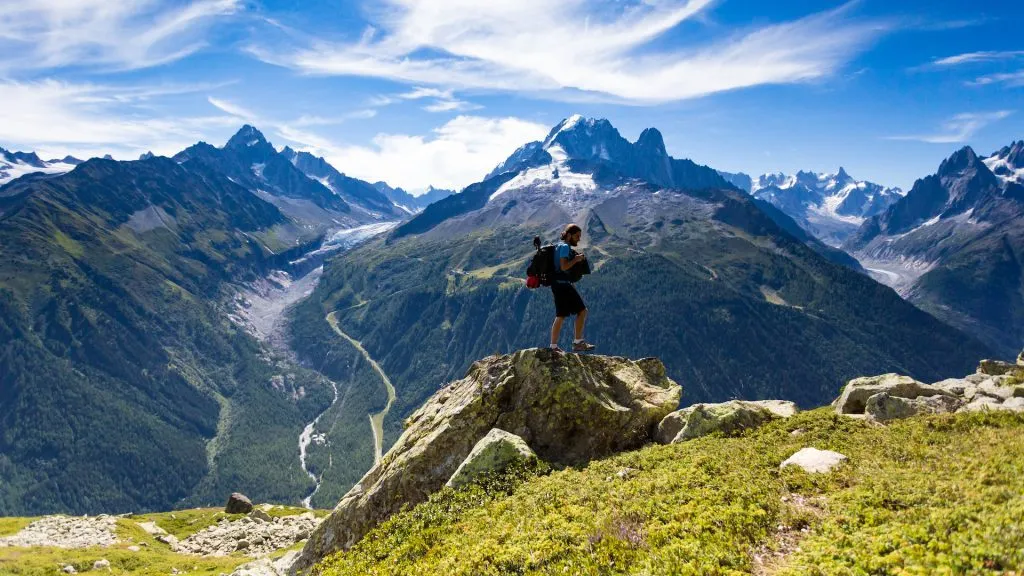
Hvor går Tour du Mont Blanc-stien?
Total lengde: Ca. 170 km (avhengig av antall alternative ruter som tas)
Total høydeøkning: Rundt 10 000 m
Antall etapper: 11
Land: Frankrike, Italia, Sveits
Navnet "tour du Mont Blanc" er på fransk og "tour du Mont Blanc" på engelsk. betyr bokstavelig talt "rundt Mont Blanc". Som navnet antyder, tar stien deg rundt Vest-Europas høyeste fjelltopp.
Og fordi denne toppen faktisk bare er en del av en massiv fjellkjede, kalt Mont Blanc-massivet, er stien rundt den mye mer episk enn å gå rundt et enkelt fjell.
Naturen langs Tour du Mont Blanc-turen er uovertruffen, fra den månelignende Aiguille Rouges til beitemarkene i Les Contamines-dalen. Men uansett hva som skjer, har du alltid Mont Blanc-massivet i bakgrunnen.
Den fører deg rundt den ugjennomtrengelige fjellveggen. over mange fjelloverganger (kalt cols)gjennom daler og langs fjellsidene. Noen ganger går den også langs en fjellrygg, men det er mer unntaket enn regelen.
Dens offisiell start er i Les Houches (like sør for Chamonix) og går gjennom byene Les Contamines, Courmayeur, La Fouly, Champex-Lac, Trient og Argentière. Den går aldri gjennom byen Chamonix, selv om mange starter turen nettopp der.
Du kan leke deg med kartet ovenfor eller lese reiseruten til vårt 11-dagers Tour du Mont Blanc med egen guide for å få mer informasjon om hvert av de 11 trinnene.
Klassisk reiserute for TMB
Tour du Mont Blanc (TMB) byr på en mengde overnattingsmuligheter, og det finnes mange kombinasjoner av hytter langs stien. Det finnes mange måter å oppleve TMB på, men følgende reiserute er en av de mest populære for turgåere som ønsker å oppleve det fantastiske landskapet og de sjarmerende landsbyene som gjør denne turen så ikonisk.
Dag 1: Les Houches - Refuge Miage
Turen starter i Les Houches, og du kan velge om du vil gå opp til Bellevue med taubane eller til fots. Stien byr på fantastisk utsikt over Bionnassay-breen og fører til hengebroen over Himalaya. Etter å ha krysset broen går stien opp til Col du Tricot, etterfulgt av en nedstigning til Refuge Miage, som ligger i Miage-dalen.
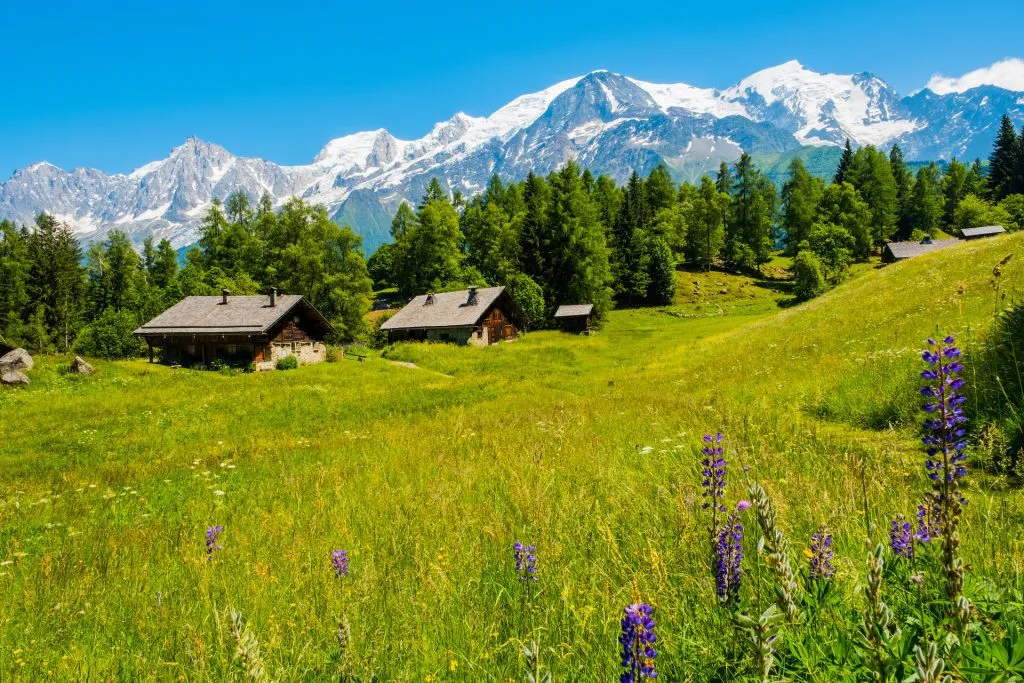
Dag 2: Refuge Miage - Refuge de la Croix du Bonhomme
Fra Refuge Miage klatrer stien over Auberge du Truc før den går ned til feriebyen Les Contamines. En spasertur langs elven eller en skytteltur tar deg til Notre Dame de la Gorge. Den påfølgende stigningen kulminerer ved Refuge de la Croix du Bonhomme, som ligger på toppen av Col de la Croix du Bonhomme.
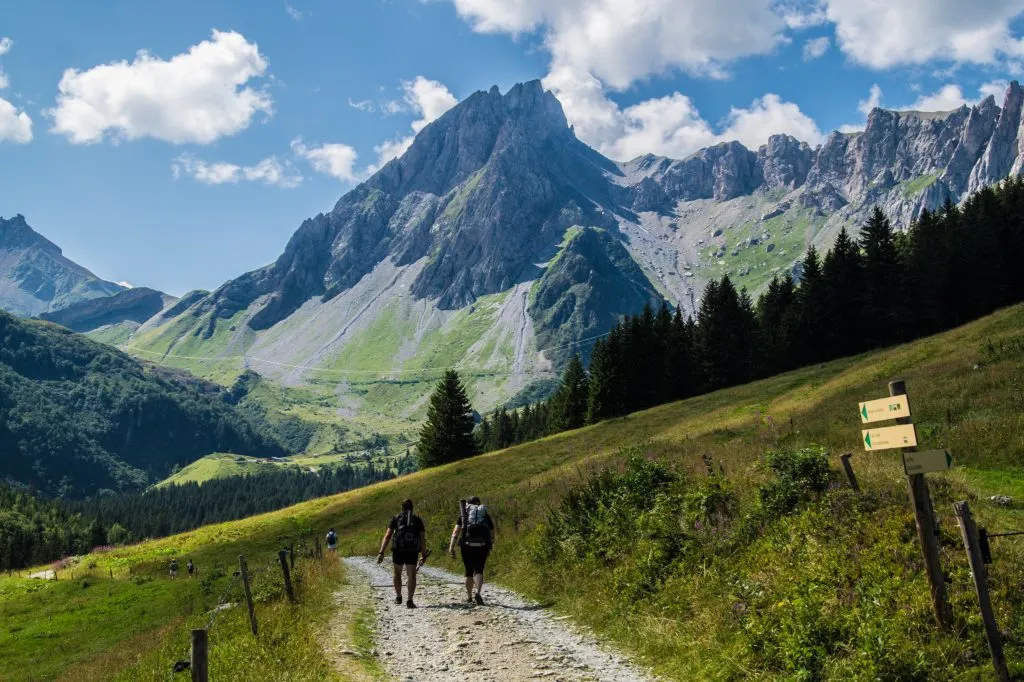
Dag 3: Refuge de la Croix du Bonhomme - Rifugio Elisabetta
Dagen begynner med en nedstigning i dalen til Les Chapieux, etterfulgt av en jevn stigning forbi Les Mottets. Deretter går stien opp til Col de la Siegne, som markerer grensen mellom Frankrike og Italia. Nedstigningen byr på panoramautsikt over isbreen Vallée Lee Blanche og Mont Blanc-massivet fra den italienske siden, og avsluttes ved Rifugio Elisabetta.
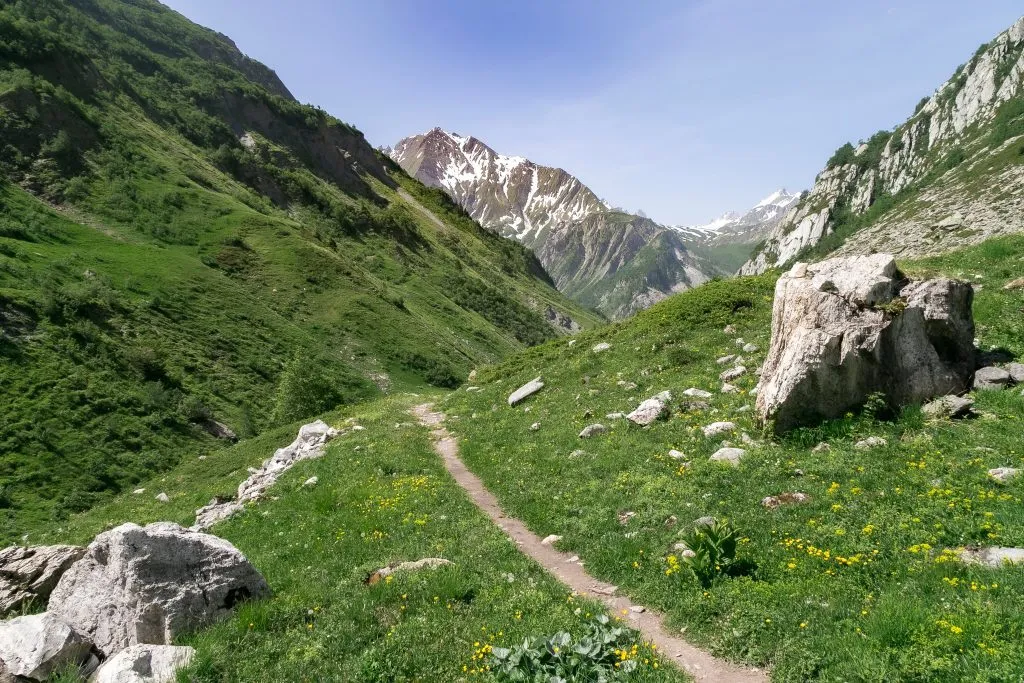
Dag 4: Rifugio Elisabetta - Courmayeur
Hvis du velger den naturskjønne stien til høyre i dalen, får du en fantastisk utsikt over Monte Bianco, som strekker seg tilbake til Col de la Siegne dagen før. Deretter går stien ned til skibakkene i Maison Vieille, etterfulgt av en bratt nedstigning til Courmayeur, det italienske motstykket til Chamonix. En taubane er tilgjengelig for de som ønsker å skåne knærne.
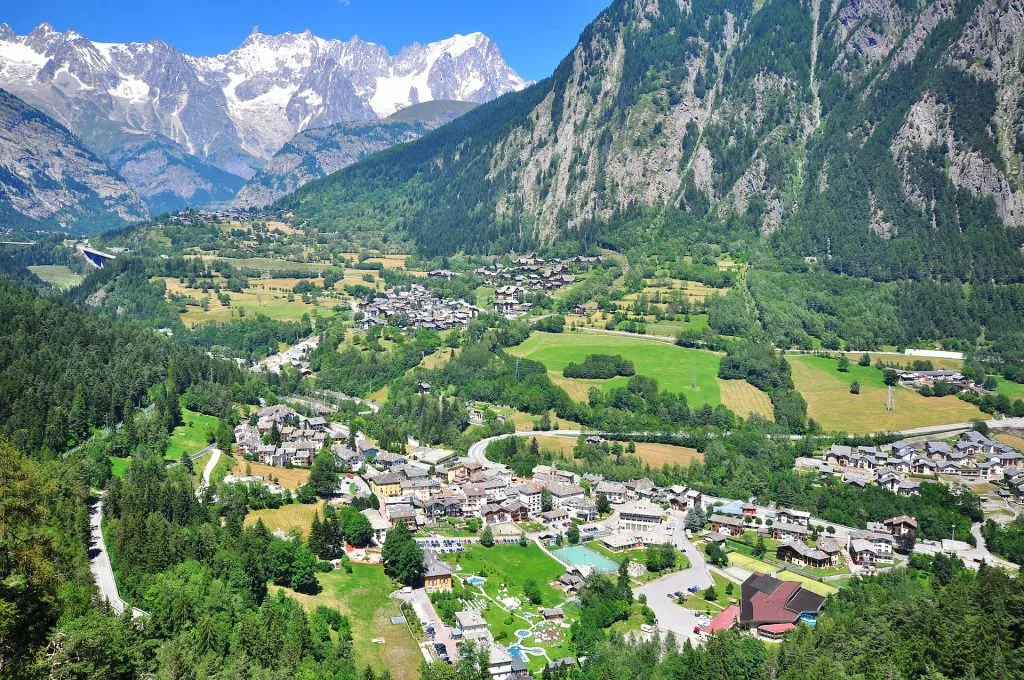
Dag 5: Courmayeur - Chalet Val Ferret
Etter en espresso om morgenen forlater stien Courmayeur og går opp til Rifugio Bertone. Her står turgåerne overfor et valg: den klassiske TMB-ruten langs nordsiden av fjellene eller den mer utfordrende, men naturskjønne fjellryggen over Mont de la Saxe. Begge stiene møtes ved Rifugio Bonatti, etterfulgt av en nedstigning i dalen til Chalet Val Ferret.
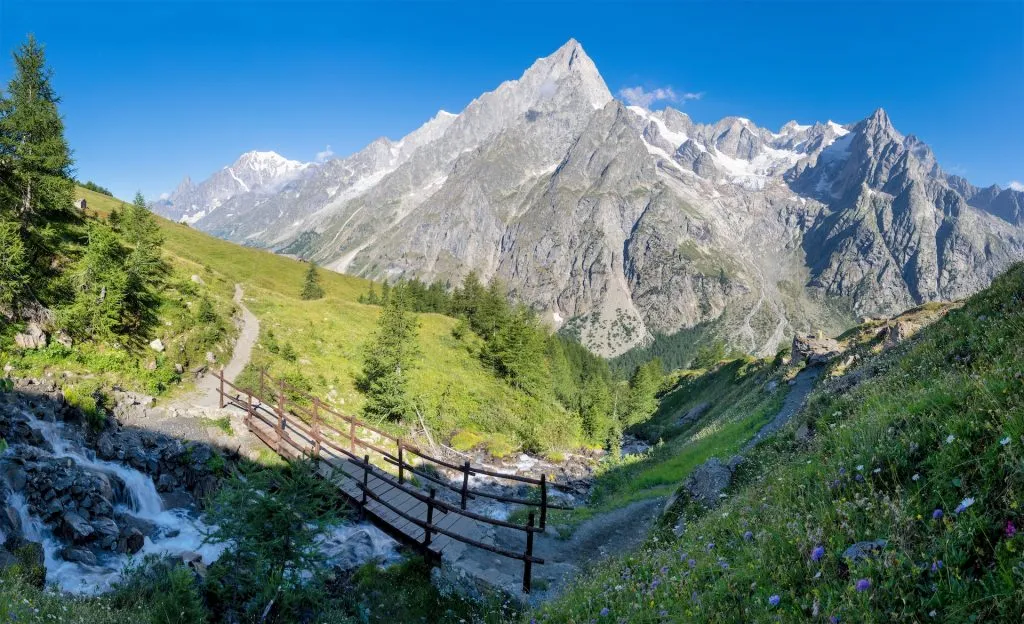
Dag 6: Chalet Val Ferret - La Fouly
Stien går opp til Grand Col Ferret, som markerer inngangen til Sveits. Landskapet forandrer seg etter hvert som stien går nedover i Ferret-dalen og ender i landsbyen La Fouly.
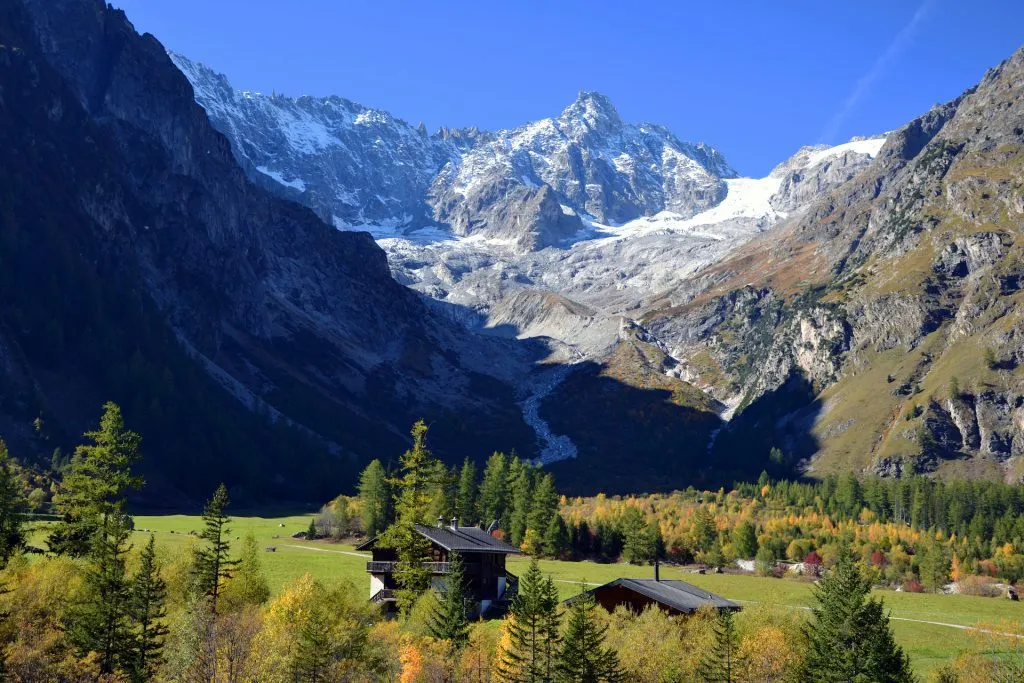
Dag 7: La Fouly - Champex-Lax
Denne etappen er en mild travers gjennom dalen, forbi grønne enger og alpelandsbyer, og ender i den pittoreske innsjøbyen Champex-Lac.
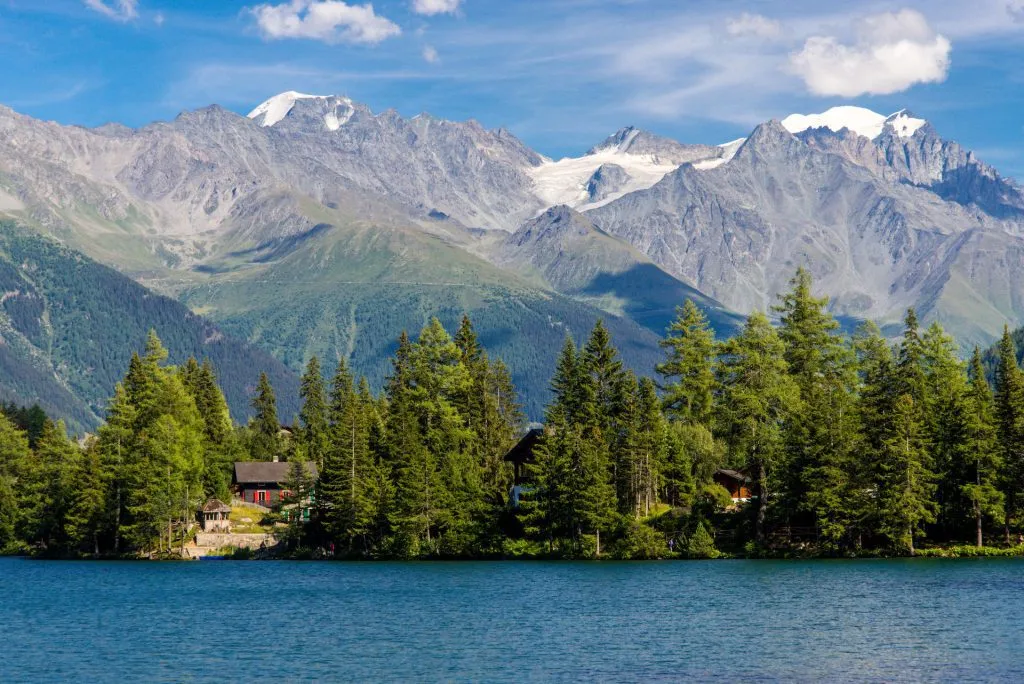
Dag 8: Champex-Lac - Trient
Etter å ha forlatt roen i dalen går stien opp til Col de la Forclaz, med vidstrakt utsikt over Rhônedalen. En alternativ rute krysser Fenetre d'Arpette, et mer utfordrende, men naturskjønt alternativ. Begge rutene går ned til den sveitsiske landsbyen Trient.
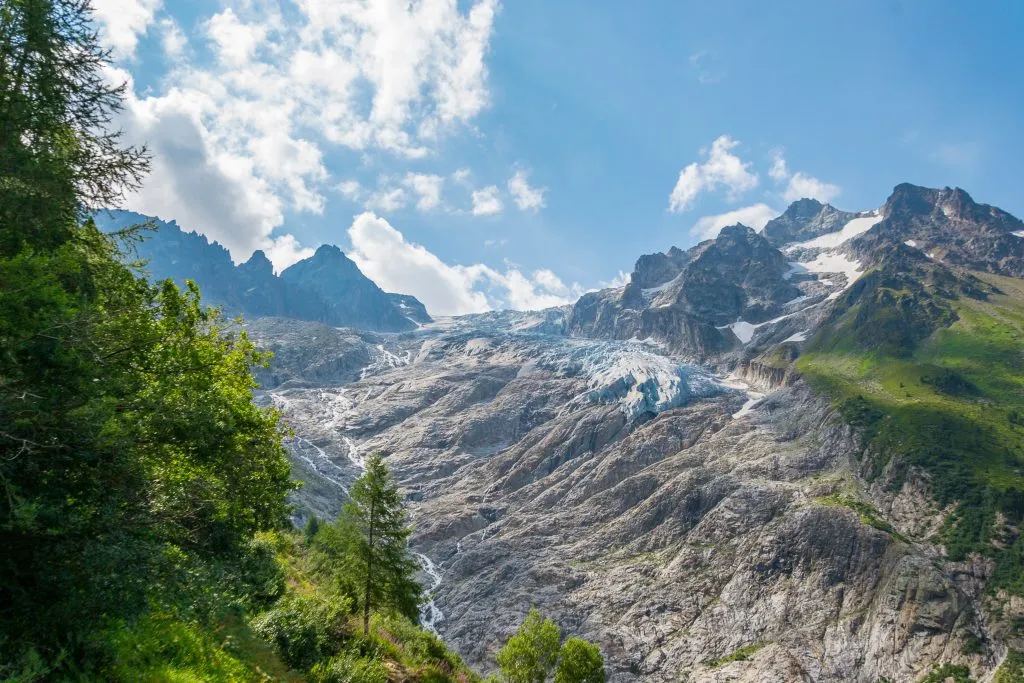
Dag 9: Trient - Tré-le-Champ
Oppstigningen til Col du Balme avslører Chamonixdalen i det fjerne, et tegn på at runden nærmer seg slutten. Løypen fortsetter inn i Frankrike og går opp til Col des Posettes og åskammen med samme navn, med fantastisk utsikt over massivet. Nedstigningen bringer stien til Tré-le-Champ.
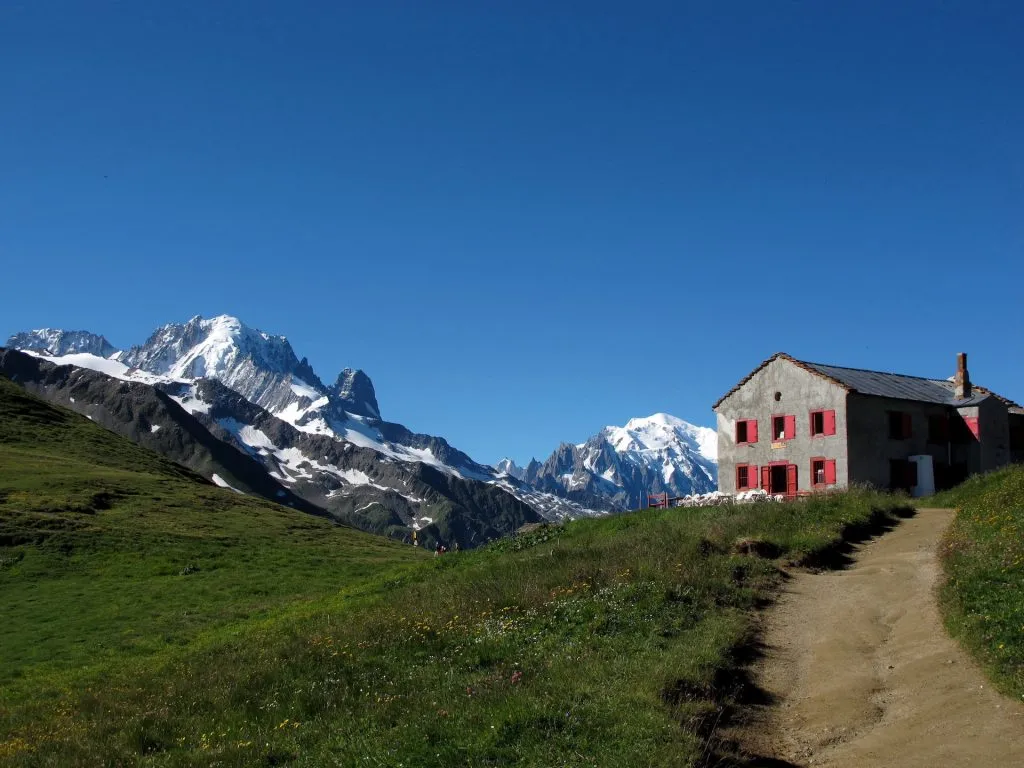
Dag 10: Tré-le-Champ - La Flégère
Stien fører til de ikoniske stigene, etterfulgt av inngangen til nasjonalparken Aiguille Rouge, som huser et rikt dyreliv. Ved et veikryss kan du enten gå opp til Lac Blanc eller ta den naturskjønne ruten over Grand Balcon Sud til Refuge La Flégère.
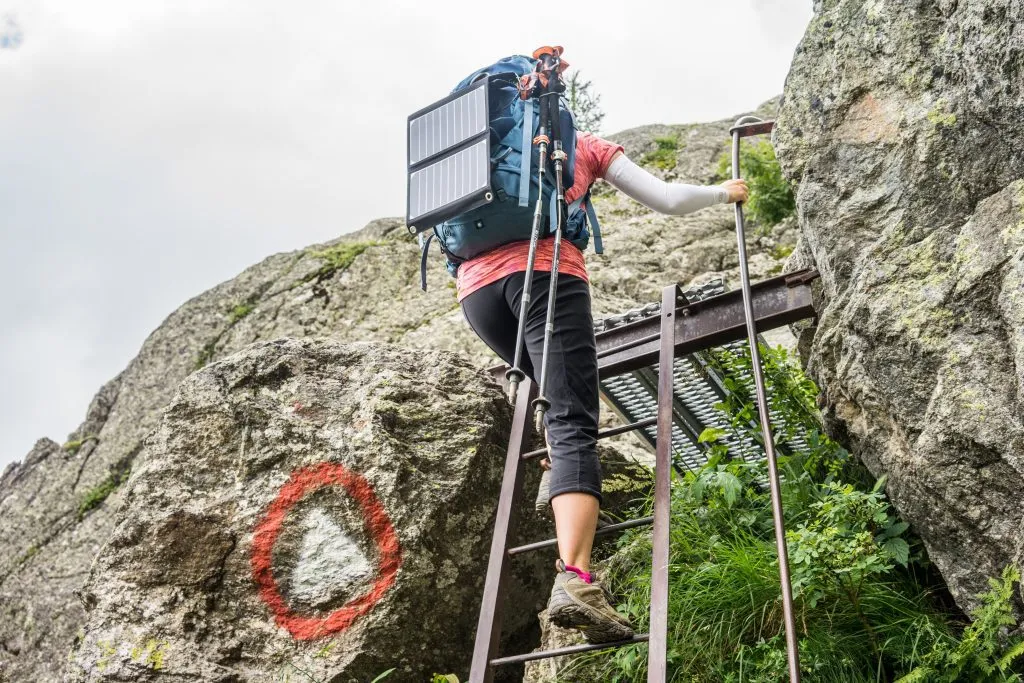
Dag 11: La Flégère - Les Houches
Den siste dagen fortsetter vi langs Balcon Sud til Le Brévent, hvor du kan velge mellom taubane eller fottur til toppen. Uansett venter en spektakulær utsikt over Mont Blanc. Stien går deretter ned til Refuge du Bellachat, etterfulgt av en lang nedstigning til Les Houches, som avslutter turen.
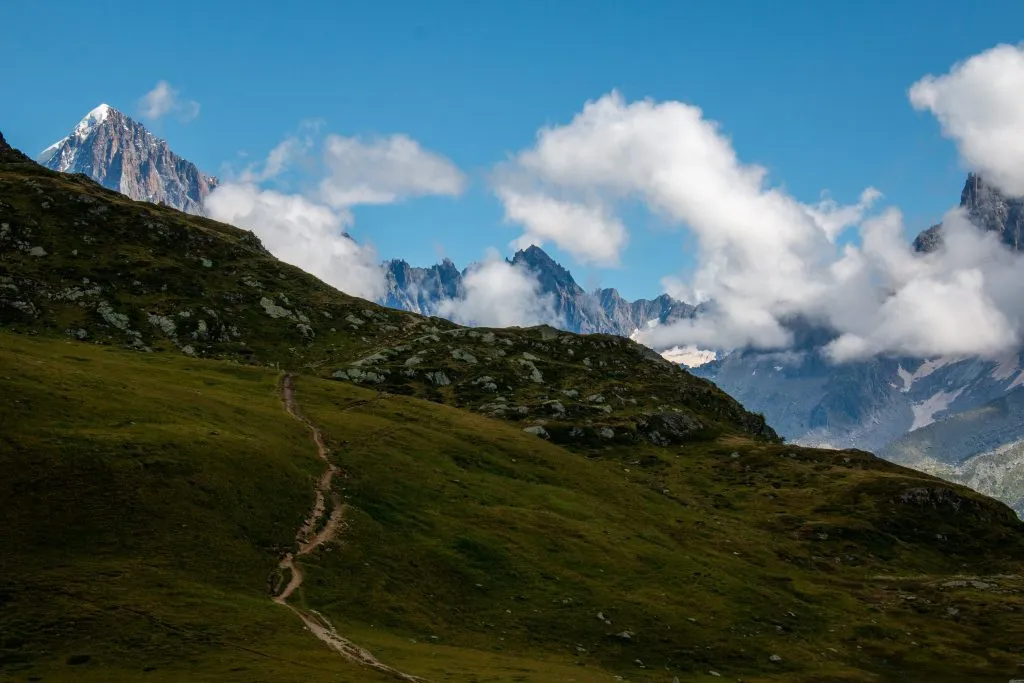
En kort historikk
Selv om stien følger mange eldgamle gjeteruteruter, ble den for første gang gått i sin helhet i 1767 av Horace Benedict de Saussure. Han var på utkikk etter måter å bestige toppen av Mont Blanc på, og han utlovet til og med en belønning for den første bestigningen.
Den nøyaktige stien hans er ukjent, men den inspirerte mange andre reisende i regionen til å gjenta hans bragd. Da fotturer ble stadig mer populære i århundrene som fulgte, ble infrastrukturen kraftig forbedret, noe som gjorde det mulig for enda flere å nyte skjønnheten i Alpene.
Hvor vanskelig er Tour du Mont Blanc?
Med en lengde på over 170 kilometer og en høydeforskjell på over 10 000 høydemeter er Tour du Mont Blanc et definitivt ikke en avslappende ferie. Alle fotturer som tar flere dager å gjennomføre, er et seriøst prosjekt og bør gjennomføres på denne måten.
Det betyr at å gå rett fra sofaen er et stort nei.. Hvis du er ung og i rimelig god form, kan du kanskje klare det, men det blir ikke så morsomt som det kunne ha vært.
Når det er sagt, for de som kaller seg turgåere - det vil si at de går regelmessig - bør ikke turen være noe stort problem. Ja, slutten av hver dag vil nok være litt hard (spesielt hvis den er lang), men du bør ikke være så sliten neste morgen.
Og hvem kan kalle seg turgåer? Alle som går regelmessig, minst én gang i uken. Og det betyr å gå en tur med minst 500 høydemeter hver uke. Gjør du det, har du et godt utgangspunkt for å takle Tour du Mont Blanc.
Hvis du vil vite mer om hvordan du forbereder deg, kan du bla nedover nedenfor.
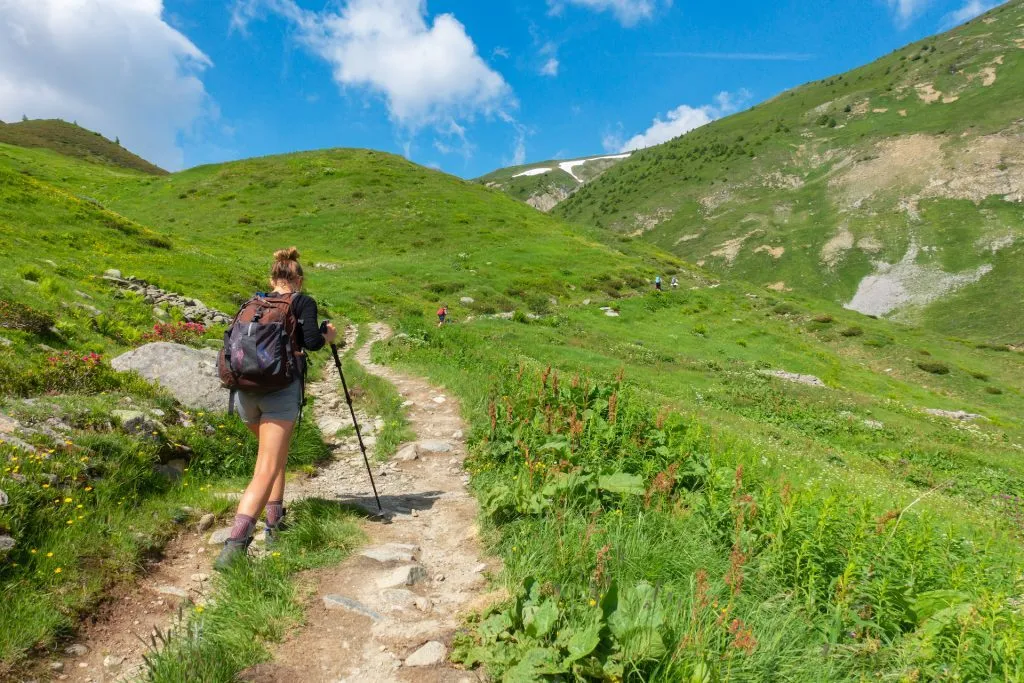
Tekniske vanskeligheter
TMB er ikke teknisk vanskelig i forhold til andre vandreruter.
For å gi deg et inntrykk av omfanget, kan vi si at de vanskeligste rutene innebærer mye klatring, der du må bruke hendene for å krysse eksponert steinete terreng. Disse bør bare forsøkes av erfarne fjellklatrere.
Det enkleste er en rimelig bred (slik at minst to personer kan møtes komfortabelt) grussti som ikke har noen ruter eller steiner, og som ikke er eksponert (eksponering er den potensielle alvorlighetsgraden av skade hvis du faller av stien). Disse kan gjøres av hvem som helst.
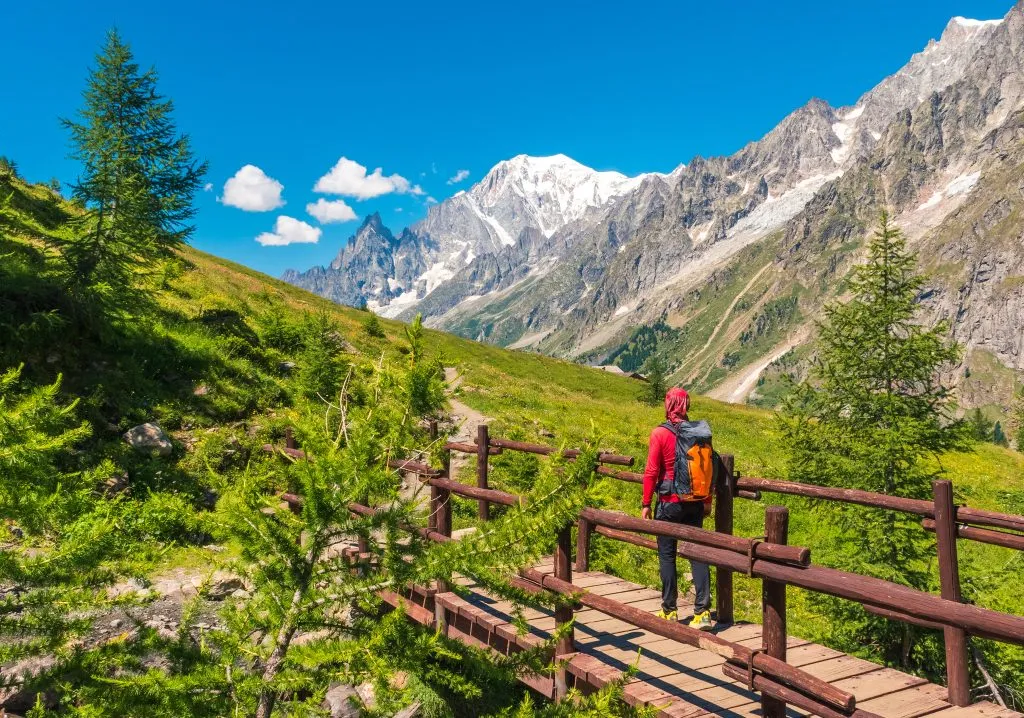
Tour du Mont Blanc-stien er ikke den enkleste, ettersom den går over ujevnt underlag, ofte fullt av røtter og steinerså det gjelder å se seg for. Det er også den (u)berømte Stigeseksjon som fører mot Lac Blanc.
I tillegg er ruten ganske enkel. Den er noen ganger litt utsatt og trangtMen du trenger aldri å stritte imot for å komme deg videre. Det du må passe deg mest for, er å forstue ankelen.
Hvis du sammenligner den med naboen, Walker's Haute Route, er TMB enklere både teknisk og treningsmessig.
Skal du gå på egen hånd eller med guide?
Hvis du leser alt det ovenstående og blir skremt fordi du aldri har vært på tur i slikt terreng før, bør du Skaffe en guide er sannsynligvis det beste valget.
Du trenger ikke å bekymre deg for noe annet enn å komme deg til møtestedet. Deretter er det bare å nyte landskapet og følge guidens anvisninger.
Hvis du ikke ønsker å gjøre alt det tunge arbeidet med å planlegge turen, kan du velge å gjøre det på Tour du Mont Blanc på egen hånd.
Du slipper å bekymre deg for å bestille overnatting (det er ikke så enkelt som det høres ut), og du kan få utmerkede råd fra fagfolk som kjenner stien og kan gjøre det mye enklere for deg.
Du må likevel gå den på egen hånd. Ikke vær redd, navigasjon på TMB er ikke noe problem, fordi stien er svært godt merket med skilt. Sammenlignet med å gå med guide, har du mye bedre mer selvstendighet og uavhengighet, og det er det stadig flere velger.
Hvis du også vil planlegge turen helt på egen hånd, bør du begynne minst ett år i forveien. Med all logistikken, overnattingssteder, rutevalg og utstyr kan det ta enda lenger tid enn det.
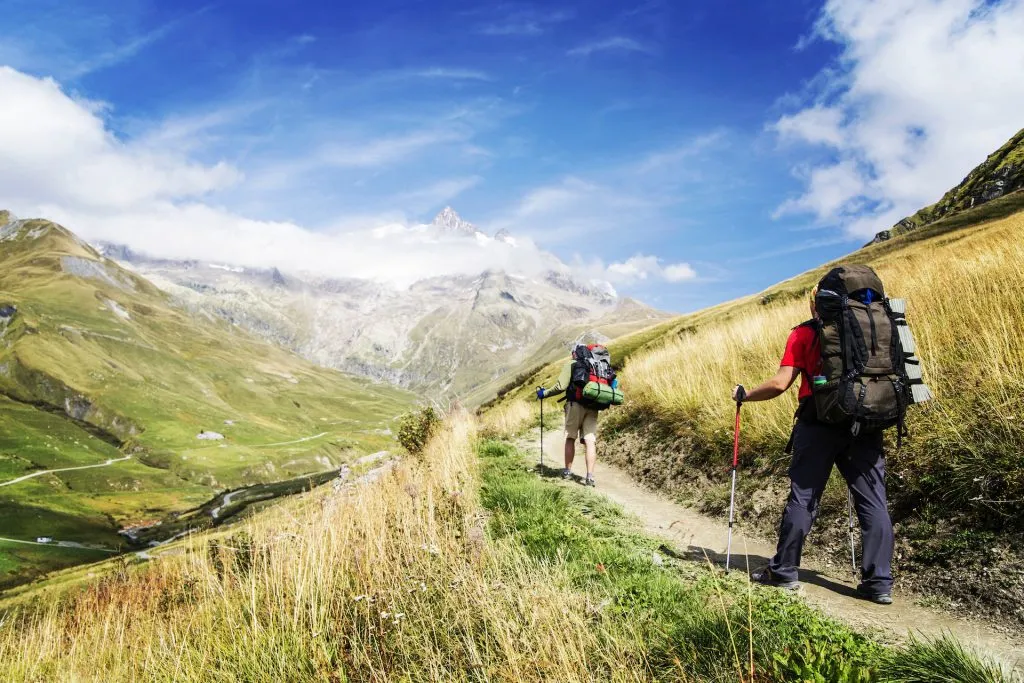
På egen hånd
Ved å velge en gjør-det-selv-tilnærming får du full kontroll over reiseruten din, og du kan utforske i ditt eget tempo. Dette alternativet krever at du planlegger rute, overnatting og måltider. Selv om denne tilnærmingen gir deg frihetbetyr det også at du må være forberedt på utfordringer som for eksempel navigasjon og nødsituasjoner.
TMB-bestillingsprosessen kan være skremmende, ettersom overnattingsstedene skal være booket tidlig. Du kan bruke guidebøker, blogger og løypekart som hjelp til å planlegge turen. Det kan imidlertid være vanskelig å bestille overnatting på egen hånd. tidkrevende og kan kreve fleksibilitet i planene dine.
Det kan også føles overveldende hvis det er første gang du gjør dette, og ikke vet hva du skal gjøre hvis ferien går galt.
Selvguidende
En selvguidet tur med et turarrangørbyrå tilbyr en balanse mellom friheten til å reise på egen hånd og personlig tilnærming og den støtte av en guidet tur. Reisebyrået tar seg av logistikk som overnatting og transport, mens du fortsatt kan planlegge ruten og vandre i ditt eget tempo.
Dette alternativet egner seg for dem som ønsker litt støtte, men som ønsker å opprettholde uavhengighet. Turoperatører som arrangerer selvguidede turer tilbyr detaljerte reiseruter, kart og etappebeskrivelser, og kan tilby tilleggstjenester som bestilling av transport, bagasjetransport og lunsjpakker.
Det er viktig å velge en pålitelig selskap for selvguidende fotturer som lytter til dine preferanser og gir deg tilstrekkelig informasjon.
Du kan finne ut mer om hvordan vi arbeider hvis du besøk vår hjemmeside.
Veiledning
En guidet omvisning gir mest støtte og minst mulig frihet, med en guide som leder deg langs stien og (vanligvis) en gruppe medvandrere som sørger for kameratskap og trygghet.
Dette alternativet er ideelt for de som ny på fotturer eller søke kunnskap og støtte fra en guide.
TMB er godt skiltet og merket, så en guidet tur kan være en god idé. ikke være nødvendig for erfarne turgåere med tilstrekkelige forberedelser, inkludert guidebok og navigasjonsapp.
Hvor mye koster Tour du Mont Blanc?
De viktigste faktorene du må ta i betraktning når du prøver å forutsi hvor mye Tour du Mont Blanc-turen din vil koste, er følgende antall dager på stien og den typer innkvartering du ville brukt.
Hvis du planlegger å gjøre alt selv, vil det ta rundt 1000 € per person, avhengig av faktorene ovenfor. Vær oppmerksom på at det betyr at du må bruke MYE mer tid på å utarbeide planen selv.
Hvis du velger å kjøpe en selvguidet versjon av TMB, er prisene fra 1400 € per person.
Men hvis du vil gjøre det med guide, stiger kostnadene opp mot 2000 € og mer.
Hvordan kommer du deg til startpunktet?
Hvis du er som de fleste TMB-vandrere, starter du turen i Les Houches, like ovenfor Chamonix. Du kan også starte turen i en av de andre byene på veien, som Courmayeur, Les Contamines eller Champex.
Hvis du vil til Chamonix, kan du komme deg dit med fly, bil eller buss.
Med fly
Den nærmeste flyplassen er Genève lufthavn i Sveits. Derfra kan du komme deg til Cham med tog, buss eller shuttlebusser.
Med bil
Det er enkelt å komme seg til Chamonix med bil fra hvor som helst, spesielt hvis du befinner deg i Frankrike, Nord-Italia eller Sveits.
Med tog
Det er en togstasjon i sentrum av Chamonix, så du kan komme deg dit med hvilken som helst internasjonal forbindelse. Det tar mye lengre tid enn andre alternativer, men er det mest naturskjønne og miljøvennlige.
Med buss
Buss er billigere enn tog, og det er vanligvis færre bytter mellom ulike busser. Men til gjengjeld tar de lengst tid og er minst komfortable.
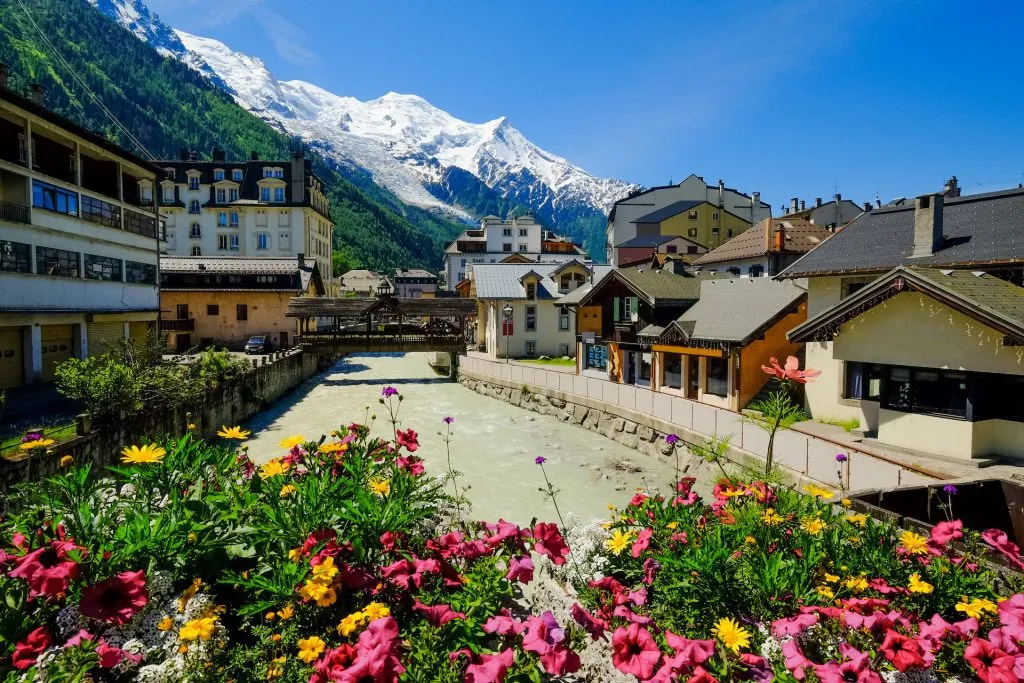
Hvordan planlegger du Tour du Mont Blanc-turen?
Det tar lang tid å planlegge en tur rundt Tour du Mont Blanc, siden det er en flerdagstur. Og med mange dager følger mange alternativer for ruter, overnattingssteder og mye mer.
Den viktigste grunnen til at du bør starte veldig tidlig er at overnattingsstedene har en tendens til å bli fulle ganske raskt. Du bør ha listen din minst et halvt år i forveien.
Og da må du begynne å planlegge tidlig - et år i forveien.
La oss se hva som er de viktigste trinnene.
Velge riktig reiserute
Det første du må gjøre er å bestemme reiseruten din. Det begynner med å velge om du skal gjøre den hele stien eller bare en del av den av det.
Det avhenger først og fremst av hvor mange dager du har til rådighet. Det kan gå ned til 7, avhengig av hvor rask og erfaren turgåer du er, men for å oppleve ruten fullt ut, bør du gjøre den på 11 dager..
Hvis du ikke har så mye tid, kan du velge å bare gå en spesifikk del av turen - for eksempel den Høydepunkter i Tour du Mont Blanc.
Det andre du må velge er hvilke av de alternative rutealternativene vil du ta, om noen. Det inkluderer å gå til den ikoniske Lac Blanc eller å ta fjellryggen over Rifugio Bertone. Uansett hva du velger, må du ta hensyn til den ekstra tiden det vil ta og planlegge deretter.
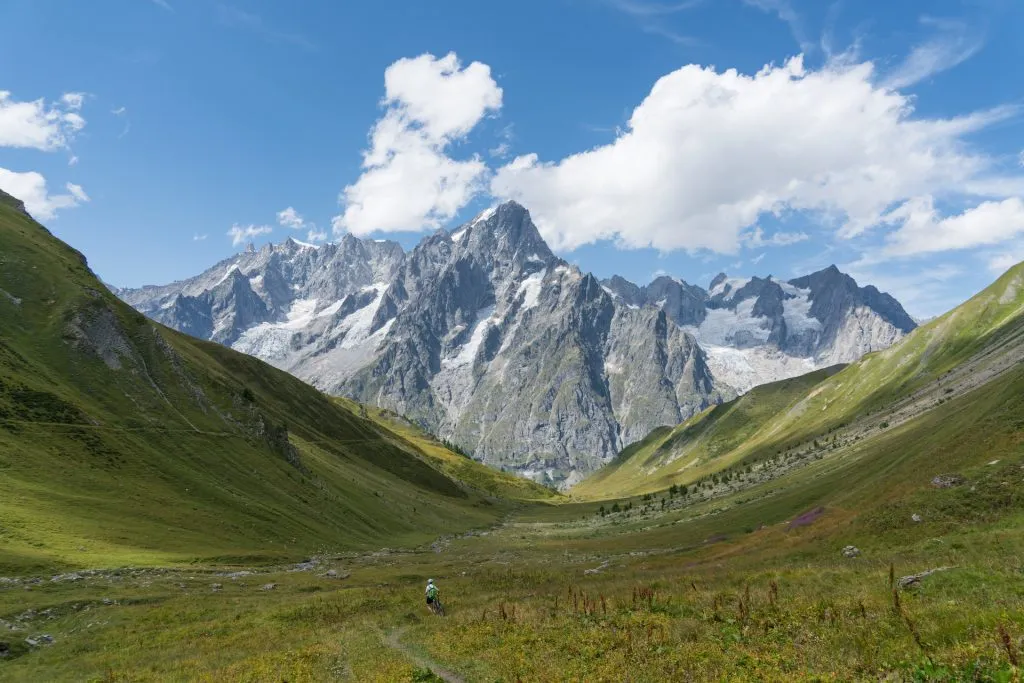
Hvilken årstid er den beste å reise til?
Tursesongen for Tour du Mont Blanc er åpnet. fra juni til september. Sesongstarten avhenger i stor grad av snømengden den foregående vinteren.
Hvis det var mye (eller sent) snøfall, kunne det likevel være vanskelig å gå den i juni. Mange deler av stien vil være dekket av snø, noe som gjør det farlig å krysse den uten spesialutstyr (isøks, stegjern) og ferdigheter i å bruke det.
Hvert år er det et par stykker som begir seg ut på TMB uten å være forberedt på snøforholdene. Og selv om de er det, kan ikke kompetanse redde deg fra snøskred.
På den annen side, hvis vinteren var mindre snørik, kunne du til og med gjøre det i mai eller før.
Likevel bør du være på den sikre siden og planlegger å gjøre det et sted mellom juni og september.
Du kan unngå folkemengdene ved å gjøre det et sted mellom slutten av august og begynnelsen av september.. Det er bare å sjekke hvilke fjellhytter som stenger mot slutten av måneden. Været blir kjøligere, men ikke for kaldt, så ta med deg en tykkere vinterjakke til kveldene.
Daglig vær
Temperaturene i høysesongen er høye i dalen (noen ganger +30 °C), og fra 20 °C til 30 °C i fjellet. Temperaturen kan synke ned til 10 °C om natten.
Det du må se etter, er mengden vind og skyer på dagen, for det kan gjøre at det føles mye kaldere i større høyder.
Det hører ikke til sjeldenhetene at en kaldfront med regn kan føre til et betydelig temperaturfall.Det kan til og med komme litt snø på fjellovergangene. I så fall er det best å vente i trygge omgivelser i dalen til det dårlige været er over.
Overnattingssteder i Tour du Mont Blanc
Siden turen er en av de mest (om ikke den mest) populære i Europa, har det dukket opp mange overnattingsmuligheter langs hele ruten.
Det mest populære alternativet for de fleste turgåere er fjellhyttene (kalt refuges), som vanligvis ligger i fjellsidene eller på cols (fjellpass). De er det beste valget hvis du virkelig vil oppleve den autentiske og romantiske stemningen av å sove i fjellet.
Men i tillegg til hyttene, er dalene fulle av forskjellige typer overnattingssteder - fra fra små familiedrevne vertshus til boutiquehoteller. Å bo i dalen gir deg virkelig mange alternativer å velge mellom.
Du må likevel være tidlig ute med å bestille overnatting!
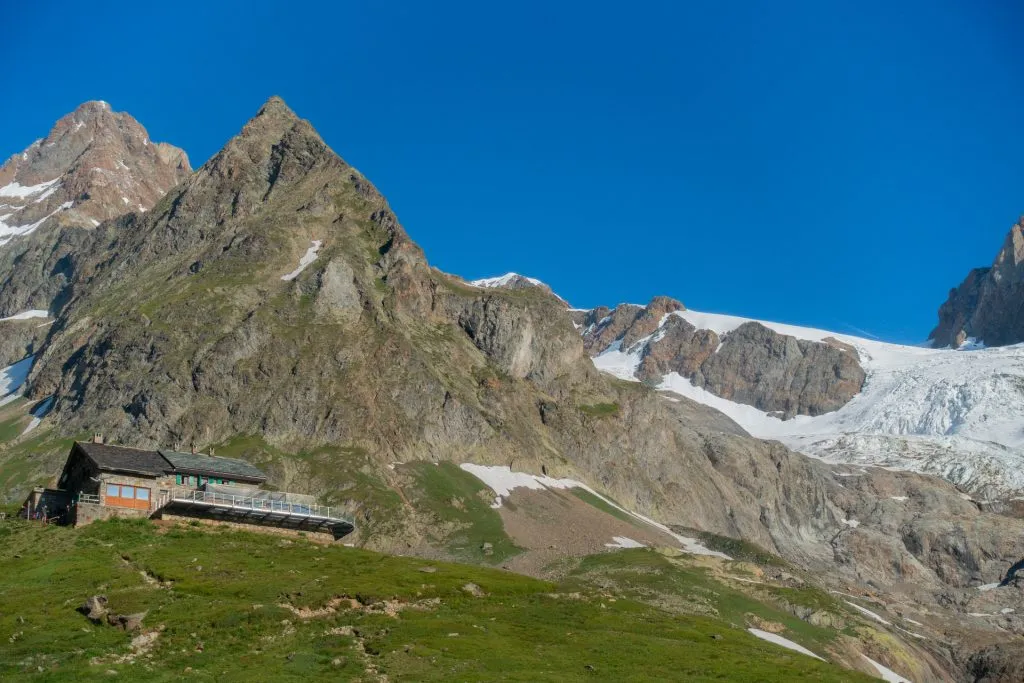
Mat
Tour du Mont Blanc fører deg gjennom regioner som er kjent for sitt kjøkkenHer får du muligheten til å prøve mange lokale retter og oppleve unike smaker. Fordi stien aldri tar deg for langt bort fra sivilisasjonen, vil det alltid være et tilfluktssted, en by eller en landsby på veien der du kan innta et måltid.
Det er mange gode alternativer å velge mellom i dalen, spesielt i byene. Men hva med tilfluktsstedene?
Den frokosten er ikke noe særligDe er som regel ganske kjedelige og små. Du får litt brød og diverse pålegg, som syltetøy og smør. Avhengig av hytta har noen også frokostblandinger, yoghurt, ost og frukt.
På den annen side, Lunsjer og middager er vanligvis 3-retters måltider med utmerket mat.. Det du trenger å bekymre deg for med dem, er at du spiser for mye ved lunsjtid og deretter ikke kan fortsette turen fordi du føler deg trøtt og slapp.
Benytt anledningen når du passerer byer til å kjøpe snacks og energibarer til veien mellom overnattingsstedene.
Vann
Vann er lett tilgjengelig på hoteller og hytter, slik at du kan fylle den opp på hvert av stoppestedene. Du kan også kjøpe vann på flaske eller fylle den i noen av bekkene du finner langs stien.
Men hvis du bestemmer deg for det siste, må du først finne skiltet der det står "eau potable". Hvis det står "eau non-potable", betyr det at vannet ikke kan drikkes.
Hvordan forberede seg til Tour du Mont Blanc?
Som vi har nevnt tidligere, kan du ikke gå Tour du Mont Blanc rett fra sofaen. Selv om du gjør det veldig sakte, må du fortsatt være klar for mange dager i strekk med en relativt tung ryggsekk.
Når du begir deg ut på stien, må du være en person som kan kalle seg turgåer. Det betyr at du bør være i stand til å gå en tur på over 10 km med 1000 meter opp og ned uten problemer.. Hvorfor det? Du vil definitivt ikke føle deg sliten på den andre dagen av Tour du Mont Blanc.
Så ... Hvordan forbereder du deg på dette? Du må begynne å trene.
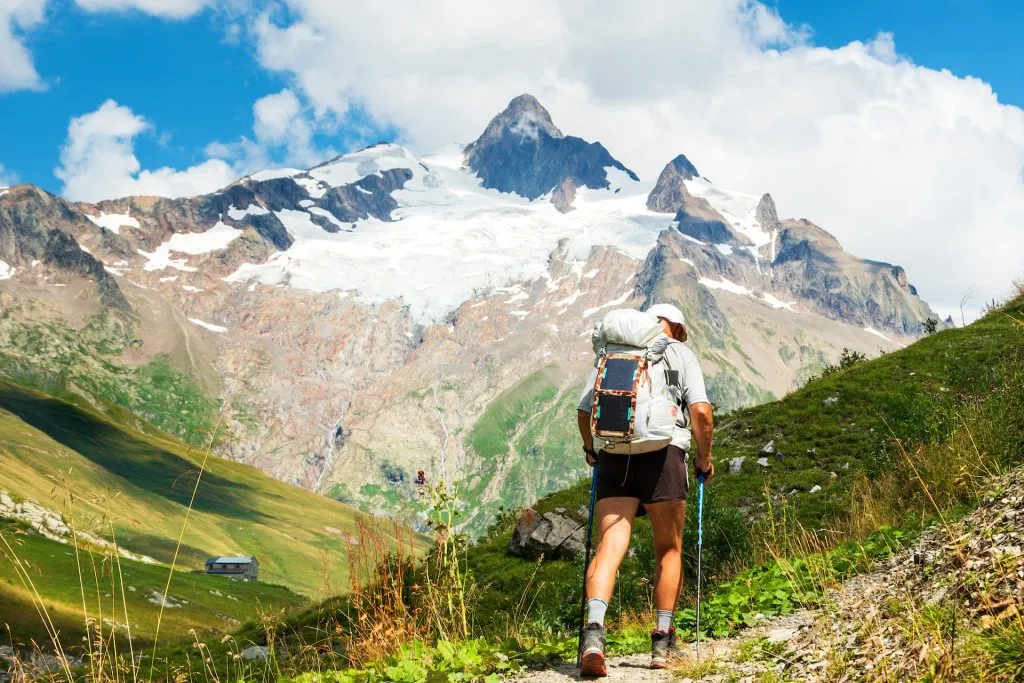
Hvordan trene?
Vi er ikke sportseksperter. Men det vi vet, kommer fra vår erfaring med langturer. Hvis du ikke går samme type turer før du starter på det store eventyret, vil du lide mer når det kommer til stykket. Og det betyr en mindre behagelig opplevelse.
Hvorfor bruke all den tiden på å kjempe for å komme seg til neste tilfluktssted, hvis du kan være lykkelig og nyte det storslåtte landskapet?
Du må Begynn å gå turer ukentlig. Det betyr ikke at du bør starte med veldig lange turer i begynnelsen, spesielt ikke hvis du ikke har vært mye på tur før. Du bør Begynn sakte, og øk distansen og høydemeterne for hver uke..
Mot slutten bør du også innlemme noen todagers turer (eller flere) i løpet av helgen, for å venne kroppen til å gå flere dager på rad.
Selv om du ikke har så lange turstier eller så høye bakker i nærheten av hjemmet ditt, kan du gjøre det. Bare gå flere runder rundt den lokale stien.
Når du går på disse treningsturene, ta ryggsekken du skal bruke på TMB, og fyll den opp. Det vil hjelpe deg med å finne riktig måte å pakke på og venne ryggen til vekten. Ta på deg turskoene også (spesielt hvis du skal ha støvler), slik at du kan bruke dem før TMB.
Og ikke glem! - ta trappene i stedet for heisen.
Hva skal jeg pakke?
Hvis du vil nyte turen, bør du holde sekken lett og bare pakke det aller nødvendigste. Hvert ekstra kilo vil føles som dødvekt på skuldrene.
Du trenger en ryggsekk med et sted mellom 25 og 40 liters plass. Hvis du pakker mer, blir det for tungt.
Det viktigste er definitivt skoene dine. Hvilken type du velger, avhenger av hva du foretrekker og hvilken erfaring du har med ulike typer. TMB kan gjennomføres i både terrengløpesko (som tusenvis gjør i UTMB-løpet), tursko eller fjellstøvler.
Du må ha mye erfaring med fjellterreng for å ta med terrengløpesko, så for en gjennomsnittlig turgåer er det fortsatt best å ta med seg tursko. De er solide og støttende nok til å bære all den ekstra vekten fra ryggsekken, men de er ikke like klumpete og tunge som støvler. Alt i alt må du ta med deg noe du føler deg komfortabel med å gå i mange kilometer om dagen i bratt, steinete terreng.
Her er vår komplette pakkeliste for Tour du Mont Blanc:
Generelt
- Tursko/støvler
- 25 til 45-liters ryggsekk (avhengig av antall dager på stien)
- Vandrestaver
Klær
- Underlagstopp (vi anbefaler merinoull)
- Sports-T-skjorte (til de varme dagene)
- Mellomliggende topp (som en fleecetopp)
- Turshorts (i de varmere månedene)
- Lange bukser for fotturer
- Vindtett jakke
- Vanntett jakke (ikke nødvendig hvis du har en hardshell-jakke av høy kvalitet som er både vind- og vanntett).
- Vanntett bukse
- Komfortable klær til kvelden i hyttene og på hotellene
- Varm dunjakke (hvis du går på tur i kaldere måneder)
- Varm lue
- Solhette
- Hansker
- Tursokker
Annet
- Solbriller
- Solkrem
- Lite førstehjelpsskrin
- Vannflaske
- Toalettartikler
- Vabelplaster
- ID eller pass
- Kontanter
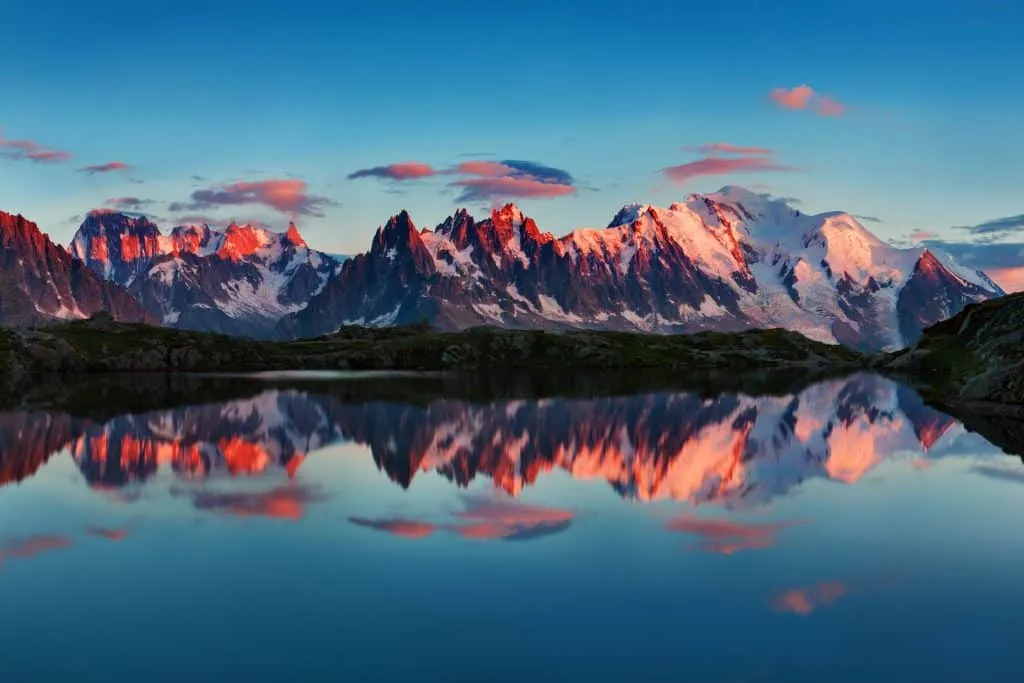
12 uunnværlige tips til fotturen Tour du Mont Blanc
1. Det er viktig å være oppmerksom på egne grenser og unngå å presse seg selv for hardt, da dette kan føre til unødvendig risiko og potensielle skader.
2. Det er viktig å holde seg til merkede stier for å unngå ulykker og for å sikre at du ikke går deg vill, da avvik fra stien kan føre til farlige situasjoner.
3. Ved å ta regelmessige pauser under turen kan du hvile og restituere deg, samtidig som du får muligheten til å nyte det vakre landskapet rundt deg.
4. Det er et viktig sikkerhetstiltak å informere noen om planene dine og hvor du befinner deg, slik at noen vet hvor du er i en nødsituasjon.
5. Når du bor på overnattingssteder, er det lurt å bruke bestemte områder til oppbevaring av friluftsutstyr som støvler og staver, slik at fellesområdene holdes ryddige og organiserte.
6. Ørepropper kan være et nyttig supplement når du deler soveplass, da de bidrar til å minimere støy og sikre en god natts søvn.
7. Mange overnattingssteder tilbyr dusjfasiliteter, men det er viktig å være oppmerksom på tid og vannforbruk, spesielt i rushtiden når andre venter på å bruke fasilitetene.
8. Det er vanligvis ikke tillatt å tilberede egne måltider eller ta med mat utenfra til overnattingsstedene, så det er best å unngå å spise egne måltider på overnattingsstedene.
9. Ved å være oppmerksom på omgivelsene og ta hensyn til andre på stien, for eksempel syklister, løpere eller raskere turgåere, sikrer du en jevn flyt og en positiv opplevelse for alle.
10. En enkel hilsen, for eksempel "Bonjour", kan bidra til å skape en følelse av fellesskap blant turgåere og en vennlig og innbydende atmosfære på stien.
11. Når du lytter til musikk, er det lurt å bruke hodetelefoner for å unngå å forstyrre andre og sikre at alle kan nyte de naturlige lydene i naturen.
12. Det er viktig å respektere naturen, noe som innebærer at man ikke etterlater seg spor og minimerer forstyrrelser i miljøet. Aktiviteter som kan skade økosystemene, for eksempel bading i innsjøer, bør unngås.
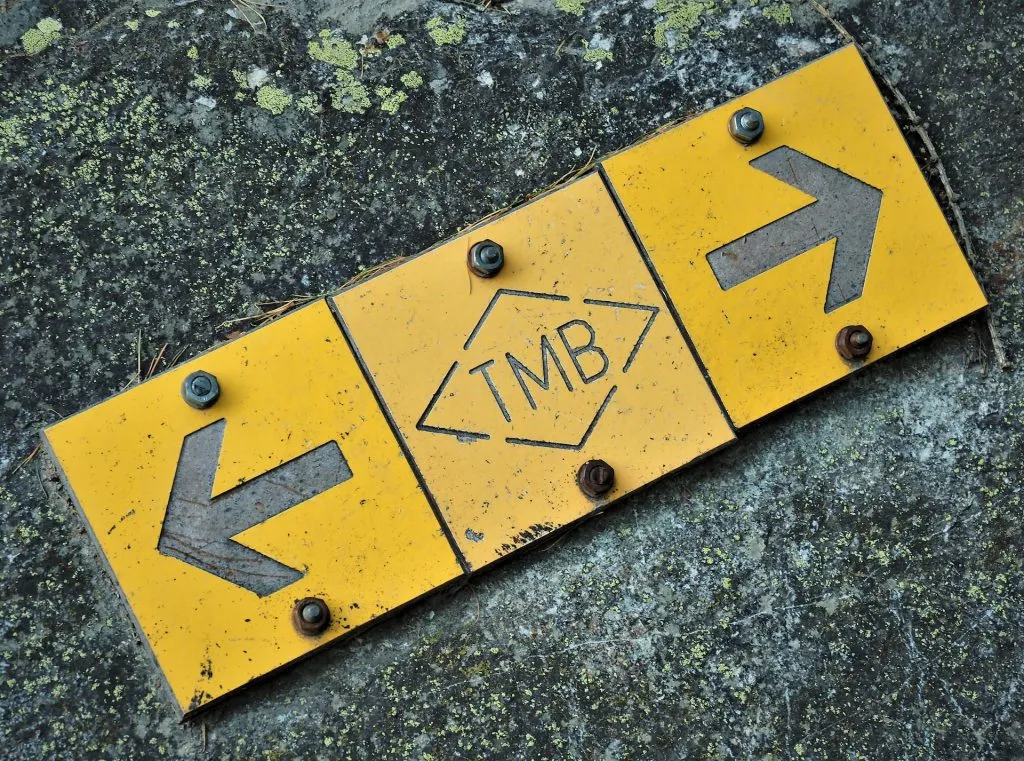
Hvor kan du bestille fotturen Tour du Mont Blanc?
Guiden ovenfor er lang og grundig. Men det trenger ikke å skremme deg fra å legge ut på Tour du Mont Blanc.
Ved å bestille en selvguidet Tour du Mont Blanc kan du spare mye tid, stress og bryderi. Og det er ikke engang så mye dyrere enn å planlegge turen på egen hånd.
Ta en titt på vår Tour du Mont Blanc-turerVelg din favoritt, send oss en forespørsel og begynn å telle dagene til ditt storslåtte eventyr.



